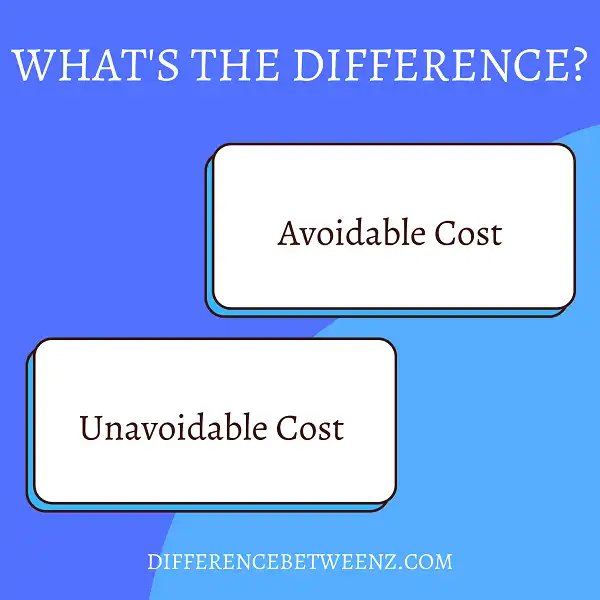There is a big difference between unavoidable and avoidable costs. Unavoidable costs are those that you cannot change, no matter what you do. Avoidable costs, on the other hand, are costs that you can control. In order to improve your bottom line, it is important to understand the difference between these two types of costs. Let’s take a closer look at each one.
What is Avoidable Cost?
Avoidable cost, also known as Avoidable Expense, is defined as a cost that could have been avoided had a different course of action been taken. In other words, avoidable costs are those that would not have been incurred if a company had chosen a different path.
- For example, if a company decides to outsource its manufacturing, it will incur the cost of hiring a new supplier. However, if the company had chosen to keep its manufacturing in-house, that cost would have been avoidable.
- Avoidable costs are important to consider when making business decisions, as they can have a significant impact on a company’s bottom line.
- While Avoidable Costs can lead to savings in the long run, they often entail upfront costs that must be weighed against potential savings. As such, Avoidable Costs must be carefully considered before any decisions are made.
What is Unavoidable Cost?
- An unavoidable cost is a sunk cost that cannot be recovered. Unavoidable cost arises when the firm has incurred the cost and it is now impossible to get out of the situation.
- For example, if a machine breaks down and the spare parts are no longer available, then the firm has no choice but to incur the cost of buying a new machine.
- Unavoidable costs are important to consider when making decisions because they cannot be recovered and should therefore be taken into account when making decisions about whether to continue with a project or not. Unavoidable costs are also known as committed costs.
Difference between Avoidable Cost and Unavoidable Cost
The Avoidable Cost is a term used in business to describe the cost that can be reduced or eliminated without affecting the production of goods or services.
- In other words, these are costs that are not essential to the business and can be cut without affecting the quality of the product.
- The most common examples of avoidable costs are advertising, overhead, and marketing expenses.
- Unavoidable Costs, on the other hand, are those that cannot be reduced without affecting the production of goods or services.
- In other words, these costs are essential to the business, and cutting them would result in a decrease in quality.
- The most common examples of unavoidable costs are raw materials, labor, and rent.
While Avoidable Costs can be reduced without affecting quality, Unavoidable Costs cannot, making them an important distinction for businesses to understand.
Conclusion
In order to make the most informed business decisions possible, it’s important for entrepreneurs to understand the difference between avoidable and unavoidable costs. By understanding which costs can be avoided with a bit of effort and which ones are simply out of our hands, we can focus on reducing or eliminating the former while preparing ourselves for potential increases in the latter.


